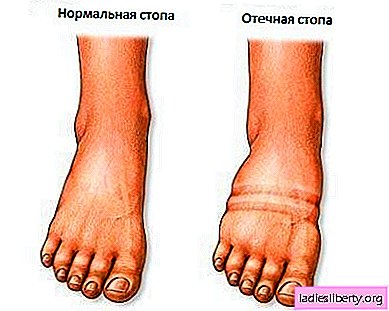
Lymphostasis called a violation of the outflow of lymph, which leads to swelling of the tissues and an increase in the size of the affected organ. In the absence of treatment for lymphostasis, microcirculation is disturbed in the surrounding tissues, fibrosis develops (strong compaction) and trophic ulcers appear. With an increase in erysipelas, the problem is aggravated even more, and various complications can occur, up to sepsis and death.
Lymphostasis - causes
In children, the cause of lymphostasis is, as a rule, a congenital malformation of the lymphatic vessels. In adults, lymphostasis can be caused by infectious diseases (for example, streptococcal infection causing erysipelas), exposure to parasites, various injuries or surgical interventions. For example, 80% of breast cancer surgeries for breast cancer cause a serious complication such as the development of lymphostasis of the upper limb.
Lymphostasis can also occur due to malformation of the lymphatic system and obstruction of the lymphatic vessels, as well as various injuries that prevent lymph outflow.
Lymphostasis can develop a second time in patients suffering from chronic venous insufficiency, as well as cardiac or renal pathology, in which lymphatic capillaries and blood vessels are not able to remove excess fluid from tissues.
Lymphostasis - symptoms
Lymphostasis has 3 stages of development, each of which is characterized by its own symptoms.
At the first stage, a spontaneous reversible edema is formed, which, falling off in the morning, reappears in the evening, but does not inspire a sick person with anxiety.
In the second stage, which is more neglected, spontaneous irreversible edema is formed. At this stage, due to the growth of connective tissue, the skin hardens and stretches, hardening of the edema occurs. The skin becomes very sensitive and painful when pulled.
The third stage is characterized by the formation of irreversible edema and damage to limb tissues, a change in its contours, loss of mobility, weighting and impaired function. This stage is called elephantiasis.
Lymphostasis - diagnosis
Diagnosis of lymphostasis is based on its clinical manifestations and the results of special methods for studying the lymphatic system, which are performed in specialized hospitals. Diagnosis of lymphostasis must include consultation of a phlebologist and an ultrasound examination of the veins, as well as a clinical and biochemical blood test, general urinalysis.
Lymphostasis - treatment and prevention
The main goal of treating lymphostasis is to prevent the development of edema and its complications. The success of treatment measures largely depends on the timeliness of contacting a lymphologist, as well as on how carefully and patiently the patient fulfills all the recommendations of the attending physician.
Most often, lymphostasis is treated using conservative methods of treatment aimed at improving the outflow of interstitial fluid from the intercellular space and increasing the number of roundabout lymphatic pathways. These treatments include:
- carrying out manual lymphatic drainage;
- imposition of a compression bandage;
- wearing special compression underwear;
- implementation of special complexes of exercise therapy;
- providing special skin care for the affected limb;
- adherence to a sub-calorie diet with a decrease in salt intake.
Surgery is rare; their goal is the reconstruction of the lymphatic drainage pathways and the removal of pathologically altered tissues.
Prevention of lymphostasis comes down to limiting physical exertion, general strengthening therapy, eliminating wearing tight and uncomfortable shoes, and also using venotonic polyvalent effects, which are characterized by a lymphotropic effect.
Comments











